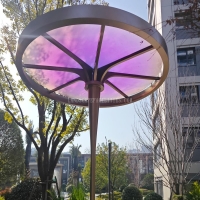Welcome to the website for landscape facilities products and knowledge.
How does the table’s design minimize sharp edges or potential injury risks?
Modern table design prioritizes user safety through multiple engineering strategies that systematically eliminate sharp edges and potential injury risks. Contemporary manufacturers employ advanced radius-edge technology where all corners undergo precision rounding processes, typically maintaining a minimum curvature of 3mm to prevent pressure points that could cause harm. The implementation of waterfall edges represents another crucial safety innovation, creating a gradual tapered profile that directs potential impacts away from the body while maintaining aesthetic appeal.
Beyond edge treatment, material selection plays a fundamental role in safety optimization. High-pressure laminates with cushioned surfaces provide impact resistance while maintaining durability, and advanced wood composites undergo specialized molding to create naturally rounded profiles. Many safety-conscious manufacturers incorporate dual-density materials, combining rigid cores with softer peripheral elements that absorb accidental impacts effectively.
Engineering considerations extend to structural stability, with widened bases and low center-of-gravity designs that prevent tipping incidents. Advanced joinery techniques eliminate protruding hardware, while seamless transitions between components remove potential pinch points. Some manufacturers incorporate tactile surface indicators that alert users to table boundaries without creating physical hazards. These comprehensive design approaches represent the furniture industry's commitment to creating environments where form and safety coexist harmoniously, particularly important in households with children or mobility-challenged individuals where table safety becomes paramount to daily living.
Related search:

Recommendation
Metal frame with gradient color acrylic combined with high-end shading landscape facilities